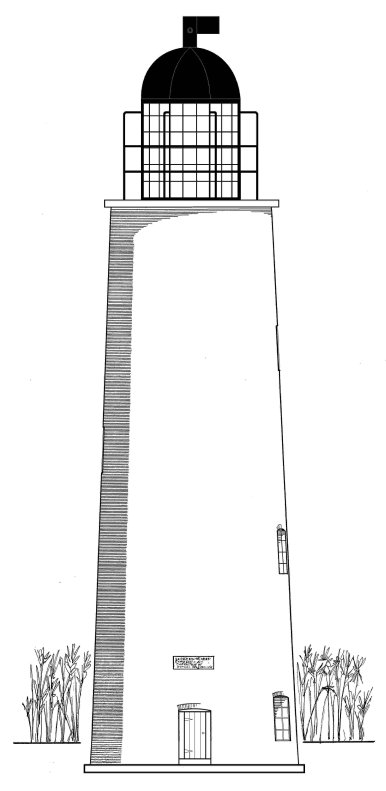One good way to get this blog going is for me to post a bibliography. That way we can all be on the same page regarding the history of the Frank’s Island lighthouses.
1. “Benjamin Latrobe’s Designs for a Lighthouse at the Mouth of the Mississippi River” by Professor Michael W. Fazio of Mississippi State University is perhaps the most comprehensive and best researched document I have found regarding the original lighthouse erected on Frank’s Island. This article is written from the perspective of historical architecture; but it covers the planning, construction, and failure of Latrobe’s lighthouse. One of the most revealing pieces that Dr. Fazio uncovers in his research is a written report from a man simply known as “Mr. Ruddock” from “Carolina”. This report makes a very compelling case that the builders failed to adhere to Latrobe’s design – thus casting doubt on the popular belief that the original lighthouse was a failure from the start. Dr. Fazio’s article can be downloaded from JSTOR, which is accessible through many university libraries. Here is the article citation – JSAH XLVIII:232-247, September 1989.
http://www.jstor.org/
2. The report on the Frank’s Island Lighthouse, prepared by Samuel Wilson, Jr. for the Historic American Buildings Survey, is another valuable resource for the history of these lighthouses. It is most probably one of the first written studies about this subject. To me, the pictures taken in 1934 of the ruins of the second tower are most intriguing. Mr. Wilson also includes an architectural drawing of the tower as it stood at that time. His report can be downloaded from the Library of Congress website - just do a search on "Frank's Island Lighthouse".
http://memory.loc.gov/ammem/collections/habs_haer/
3. "Lighthouses, Lightships, and the Gulf of Mexico" is a book written by David L. Cipra. Mr. Cipra has been remembered as being one of the most knowledgeable people on Gulf Coast lighthouses. His book is well-researched and very informative. It is available for purchase online from Cypress Communications.
http://www.lighthousehistory.info/id22.html
Mr. Cipra also wrote a book called "Lighthouses & Lightships of the Northern Gulf of Mexico" for the Department of Transportation in 1976. This book is now out-of-print, but well worth having if you can purchase a used copy at a resonable price.
4. "Plan Elevation & Section of a Lighthouse Proposed to be Erected at the Mouth of the Mississippi River" is a single sheet plan of Latrobe's lighthouse drafted by Henry Latrobe. This document is kept at the National Archives Cartographic Division in Maryland. The full citation for Latrobe's plans are as follows:
RG 26 ~ Records of the United States Coast Guard ~ Louisiana ~ Mississippi River: Title: "Plan Elevation 1/2 Section of a Lighthouse to be Erected at the Mouth of the Mississippi River." Date: 1816. Size: 15 inches by 24 inches. Manuscript.
A copy of this document can be purchased through National Air Survey/Visual Image Presentations. They really went out of their way to provide me with a great copy of Latrobe's plans! I would highly recommend their services for National Archive reproductions.
http://www.nascc.com/
5. American State Papers, Commerce and Navigation, Volume 2, pages 43-46 - Contains report from Henry Latrobe dated 1816
6. There are numerous "Letters from Lighthouse Superintendents" (Chew to Smith, Chew to Pleasanton) kept at the National Archives dated from 1818 to 1823 referenced in the other recommended reading materials. Unfortunately, I am not able to get to the National Archives at this time in order to copy these letters. If anyone has access to these letters and is willing to share, please let me know by way of a post.
Monday, September 3, 2007
Subscribe to:
Post Comments (Atom)





No comments:
Post a Comment